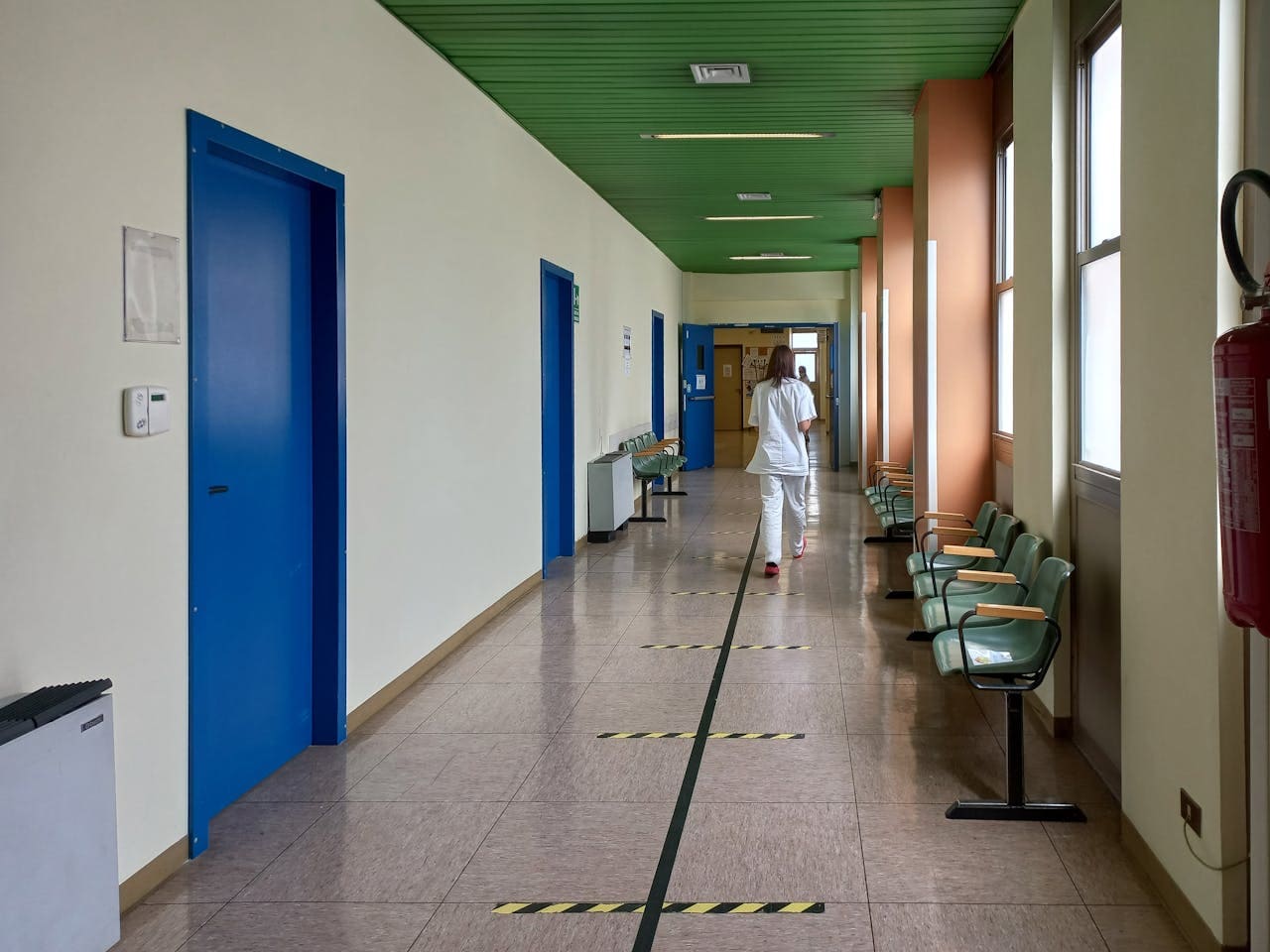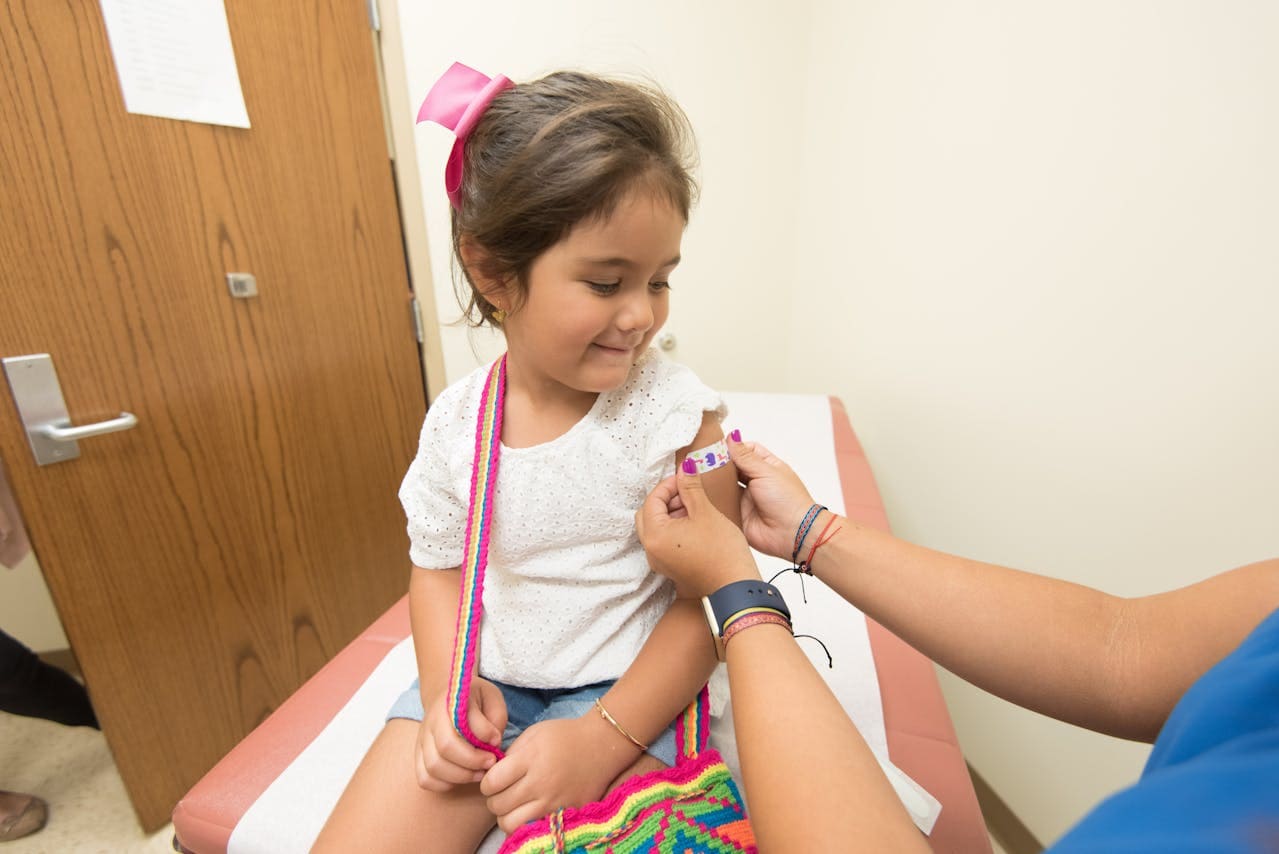
Doctor guided GLP-1 weight loss treatment
Talk one-on-one with a doctor about Wegovy, Ozempic, Mounjaro and other GLP-1 medicines – start your weight-loss journey today.
 Proven GLP-1 injections help patients lose up to 15 % body weight
Proven GLP-1 injections help patients lose up to 15 % body weight Same-day video appointments with weight-loss specialists
Same-day video appointments with weight-loss specialists e-Prescription issued when clinically appropriate – pick up at your pharmacy
e-Prescription issued when clinically appropriate – pick up at your pharmacy Transparent, pay-per-visit pricing with no hidden fees
Transparent, pay-per-visit pricing with no hidden fees
How to get an online GLP-1 prescription for weight loss
Book a doctor through Oladoctor, discuss whether GLP-1 therapy suits your goals, and, when appropriate, receive an e-prescription you can fill locally.

Prescriptions are issued solely at the doctor’s discretion. If you experience severe symptoms or a medical emergency, call your local emergency services immediately.
Choose a doctorBrowse GLP-1 weight loss doctors online
Compare experience, languages and appointment slots, then book a video consultation in minutes through Oladoctor.
GLP-1 weight loss treatment: what you need to know
A concise guide to effectiveness, eligibility, safety, cost and access — so you can decide if GLP-1 therapy is right for you.
What is GLP-1 and how does it help you lose weight?
Glucagon-like peptide-1 (GLP-1) is a natural gut hormone released after you eat. It tells your brain you’re full, slows the speed at which food leaves your stomach, and keeps blood-sugar swings in check.
GLP-1 receptor agonists—medicines that copy this hormone—extend those signals for hours. You feel satisfied sooner, stay fuller longer, and typically eat fewer calories without white-knuckle willpower.
Large clinical trials show that people taking a GLP-1 agonist such as semaglutide (brand Wegovy) or tirzepatide (brand Mounjaro) lose an average 12-17% of their body weight over roughly one year, when treatment is combined with balanced nutrition and activity. Results vary, but most patients begin to see steady loss within the first 8–12 weeks.
Beyond the scale, GLP-1 therapy can improve blood-sugar control, lower blood pressure and reduce cardiovascular risk—important wins if you’re living with obesity or type 2 diabetes.
Real-world results: how much weight can you expect?
Across multiple European registry studies and randomised trials, patients on GLP-1 therapy lose about 1% of their starting weight per week in the early dose-escalation phase, then settle into a steadier decline that totals 12–17% after 12 months. The range is wide—some see single-digit loss, others exceed 20 %—but roughly four out of five users achieve at least a clinically meaningful 5% drop.
Several factors shape your personal curve: starting BMI, the specific molecule (semaglutide vs. tirzepatide), titration speed, and how closely you follow the diet-quality and movement tips your doctor gives you. People with higher baseline insulin resistance often shed kilos faster once blood-sugar swings calm down.
Expect a visible shift on the scale by weeks 8–12; many report looser clothes before that. Around month 6, weight-loss typically plateaus as your body adapts. Your doctor may then adjust the dose, extend treatment, or pair the injection with strength training to preserve lean mass.
Real stories mirror the stats: Maria, 41, BMI 32 kg/m², dropped 13 kg in eight months and reversed pre-diabetes; Jens, 52, BMI 38 kg/m², lost 19 kg and cut his blood-pressure meds in half. Your experience will be unique, but these outcomes show what’s achievable when medication and lifestyle pull in the same direction.
Who qualifies for GLP-1 therapy? BMI, health conditions and contra-indications
Adults generally qualify for a GLP-1 weight-loss medicine when body-mass index (BMI) is 30 kg/m² or higher, or 27 kg/m² plus an obesity-related condition such as hypertension, type 2 diabetes, fatty-liver disease or obstructive sleep apnoea. Those thresholds align with EMA and national guidelines and reflect where the risk-to-benefit ratio tips in favour of treatment.
Several metabolic factors can strengthen eligibility. People with long-standing insulin resistance, polycystic ovary syndrome (PCOS) or pre-diabetes often respond well because GLP-1 agonists also smooth glucose swings and curb hunger spikes. Your doctor will weigh these benefits against any risks before issuing an e-prescription.
Contra-indications are few but important. Patients with a personal or family history of medullary thyroid carcinoma, multiple endocrine neoplasia type 2, active pancreatitis, severe gastrointestinal disease, or chronic kidney failure usually need an alternative approach. Pregnancy and breastfeeding are also exclusions, as safety data remain limited.
Because these clinical details vary from one person to the next, only a qualified physician can confirm whether a GLP-1 medicine — such as semaglutide or tirzepatide — is appropriate. During the consultation the doctor will review your health history, current medications and recent labs. If GLP-1 therapy isn’t suitable, they can suggest other evidence-based options or refer you for additional tests.
Common side effects and how to stay safe on GLP-1 injections
Mild stomach issues are the norm: about one patient in three feels nausea, burping, or early fullness during the first few weeks. Constipation or loose stools can follow as your gut adjusts, but most symptoms fade once the dose stabilises.
Simple ways to ease the ride: start with the lowest dose your doctor recommends, add protein to each meal, keep portions small, sip water throughout the day, and try ginger or peppermint tea for queasiness. Moving for ten minutes after eating also helps food settle.
Serious problems are rare, yet you should know the red flags. Stop the injection and seek medical care if you have sharp upper-abdominal pain, persistent vomiting, signs of gallstones (yellow skin, severe right-side pain) or sudden vision changes when you use insulin. These may signal pancreatitis, gallbladder disease, or dangerously low blood sugar.
Tell your doctor about every medicine you take—especially insulin or sulfonylureas, which can push glucose too low when combined with a GLP-1 agonist. If you use oral tablets that must be absorbed fast (e.g., thyroid medication), take them at least 30 minutes before your injection.
Plan a lab check every three to six months (kidney function, thyroid panel) and pause treatment if you become pregnant or are planning to.
Cost, availability and how the e-prescription works
Monthly GLP-1 cost in Europe typically ranges from €280–€450 for a standard dose of semaglutide (Ozempic) or tirzepatide (Mounjaro); smaller starter pens cost less, higher-dose pens slightly more. Prices vary by country, pharmacy contract and VAT, so check local quotes before you commit.
Your spend on Oladoctor is split in two lines: a one-time video-consultation fee (displayed up front when you choose the doctor) and the pharmacy price of the medication itself. There are no platform subscriptions or automatic refills—pay only when you book a visit.
After the online consultation, the doctor issues a secure e-prescription via your national e-health system or a digitally signed PDF. You present that code/document at any participating pharmacy; most stores can order the pen within 24–48 hours if it’s not already on the shelf.
Demand occasionally outstrips supply. If Wegovy or Ozempic is back-ordered, your doctor can discuss alternative strengths, compounding pharmacies, or a switch to another GLP-1 molecule until stock stabilises. Ordering early and confirming availability with your pharmacist reduces gaps in therapy.
Private insurers in several EU markets reimburse part of the drug cost when BMI or an obesity-related condition meets their criteria. Ask for an itemised invoice during checkout to submit a claim or to apply corporate wellness benefits.



















Your guide to healthcare in Europe
Practical information for getting care while living, working, or travelling in Europe — all in one place.
GLP-1 weight loss FAQ: cost, eligibility, safety & prescriptions
Get quick answers on who qualifies, expected results, side effects, pricing, and how e-prescriptions work















